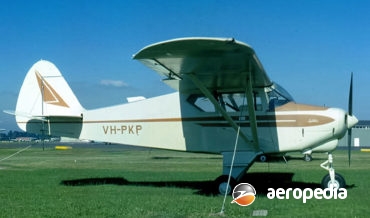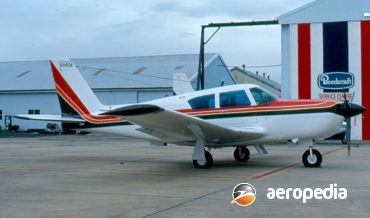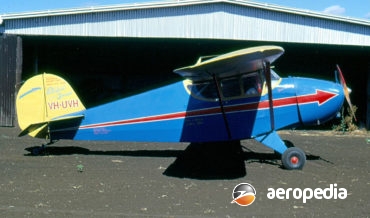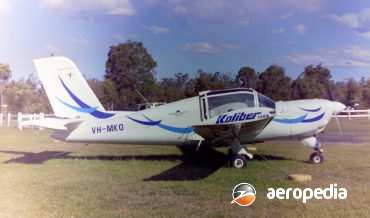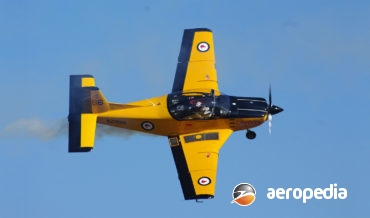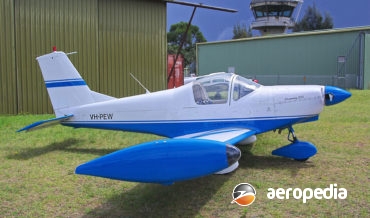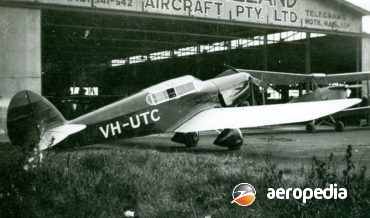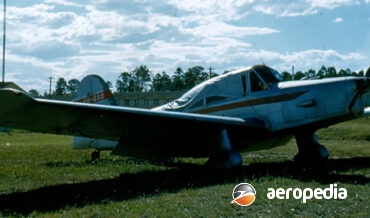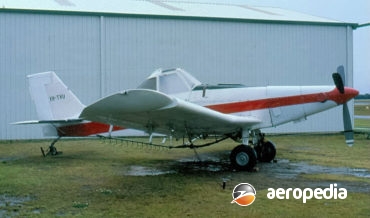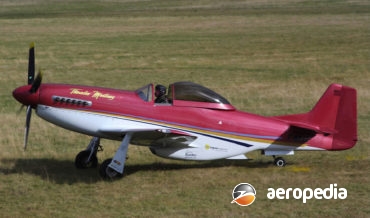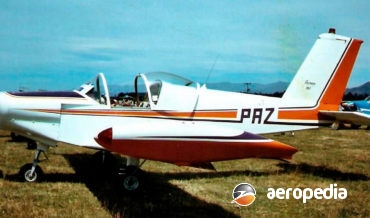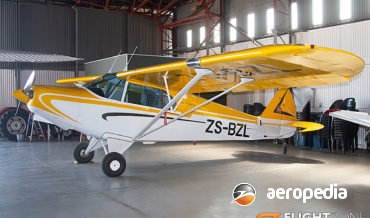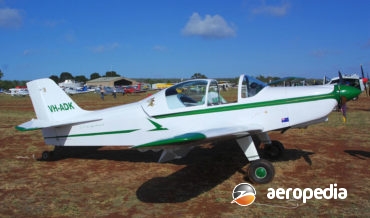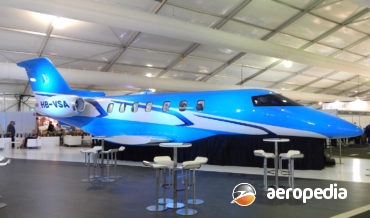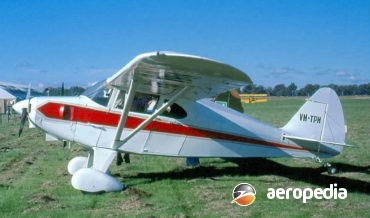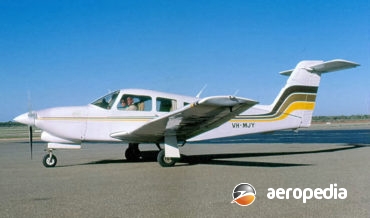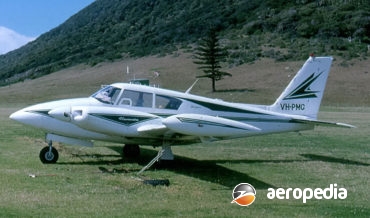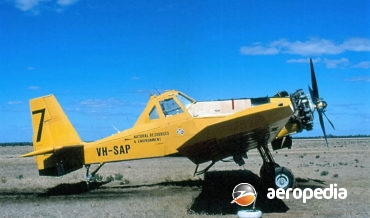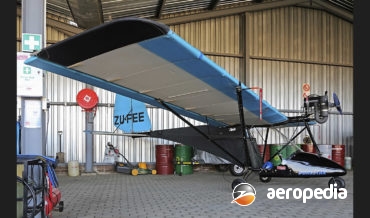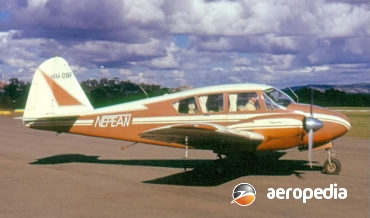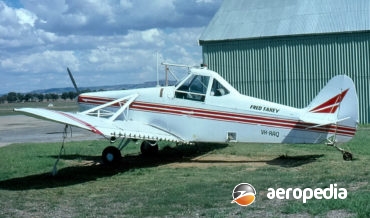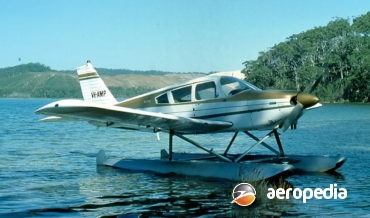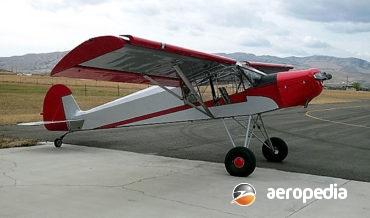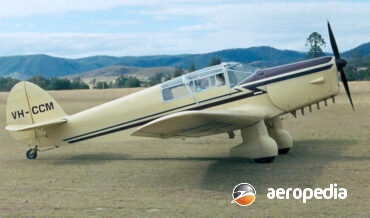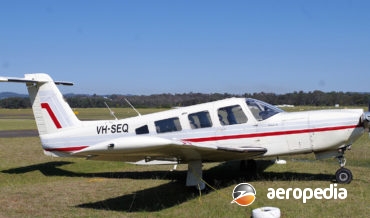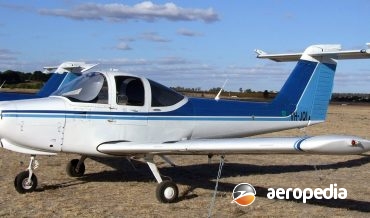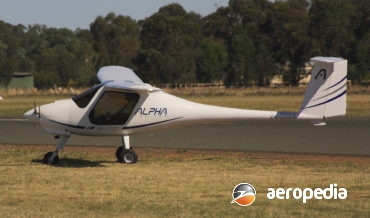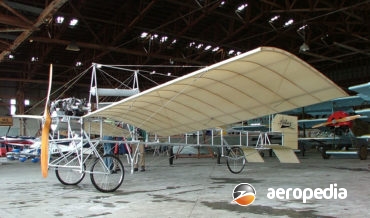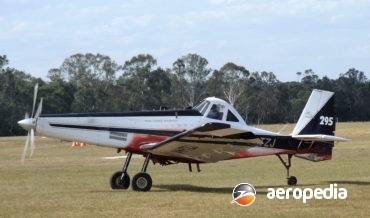All Contents
Contents
The Piper Colt was designed by the Piper Aircraft Corporation as a cheap ‘everymans aeroplane’ to sell in the United States for below $5,000 in the early 1960s.
David C. Eyre
- May 8, 2019
Following the success of the earlier models of the Comanche, Piper moved on to build what it described in advertising as the ultimate light aircraft: ..this new Piper Comanche 400 is a pretty meaningful airplane
David C. Eyre
- May 8, 2019
The Piper PA-44 Seminole was designed in 1974 as a twin-engine training aircraft for pilots who had previously flown only single-engine aircraft, basically being a replacement for the Twin Comanche
David C. Eyre
- May 8, 2019
The Porterfield 35-70 series of aircraft was placed in production by the Porterfield Aircraft Corporation in the USA in April 1935.
David C. Eyre
- May 8, 2019
The CT-4E is a two-seat (with a third seat optional) low-wing all-metal single-engine monoplane with a fixed tricycle undercarriage, a Lycoming AEIO-540 fuel injected piston engine certified for inverted flight, driving a Hartzell three-blade constant speed propeller.
David C. Eyre
- May 8, 2019
The prototype of the Pazmany series of aircraft, the PL-1 Laminar, was flown for the first time on 23 March 1962.
David C. Eyre
- May 8, 2019
The series of aircraft stemming from the Gull were all-wood low-wing monoplanes designed by Edgar W Percival, the Australian who founded Percival Aircraft Ltd.
David C. Eyre
- May 8, 2019
The Prentice was designed by Percival Aircraft to meet specification T23/43 for a three-seat basic and radio-navigational trainer for the RAF to replace the Tiger Moth in RAF service. The prototype (TV163) flew for the first time on 31 March 1946 and subsequently production of the T.1 model began for
David C. Eyre
- May 8, 2019
In 1981 Piper Aircraft sold the rights to the PA-36 type to WTA based in Texas which Company thereafter marketed two variants from 1982, these being the PA-36-375 New Brave and the PA-36-400 New Brave with 280-kw (375-hp) and 298-kw (400-hp) engines and by 1987 had completed 150 further aircraft,
David C. Eyre
- May 8, 2019
The Airtrainer series was developed by AESL from the Victa Aircruiser, production proceeding for some years, and the type is still in limited production.
David C. Eyre
- May 8, 2019
The Thunder Mustang was produced by Papa 51 Ltd at its facility at Nampa, Idaho and is an all-composite three-quarter scale replica of the North American P-51 Mustang.
David C. Eyre
- May 8, 2019
The Pazmany PL-1, known as the Laminar for its laminar flow wing, was designed by Ladislao Pazmany for the home-built aircraft market, the prototype flying for the first time on 23 March 1962.
David C. Eyre
- May 8, 2019
In the late 1940s Piper Aircraft Corp at Lock Haven, Pennsylvania was looking at producing a four-seat high-wing monoplane along the lines of the PA-12 Super Cruiser and it became known as the PA-14 Family Cruiser, this being achieved by widening the fuselage by 10.16 cm (4-in) and it was
David C. Eyre
- May 8, 2019
The Piaggio P.148 was designed by Giovani Casiraghi for Piaggio in Italy as a two-seat training aircraft, the prototype flying for the first time on 12 February 1951.
David C. Eyre
- May 8, 2019
Designed in France by M Claude Piel, the prototype of the Emeraude (Emerald) series, known as the CP-30, was flown for the first time in 1952 powered by a 48-kw (65-hp) Continental engine.
David C. Eyre
- May 8, 2019
Pilatus Aircraft Ltd was founded in 1939 and since then has operated from Stans, Switzerland, and has been the only Swiss company to develop, produce and sell aircraft to customers around the world, ranging from military trainers to now, a business and executive jet.
David C. Eyre
- May 8, 2019
The Piper J-2 Cub first appeared in 1936 as a simple two-seat in tandem, training monoplane designed by the brothers C Gilbert and Gordon Taylor
David C. Eyre
- May 8, 2019
The Piper PA-20 Pacer, introduced in 1949, was a development of the PA-16 Clipper, which was in turn a development of the PA-15 Vagabond. The PA-16 was fitted with a 86-kw (115-hp) Lycoming four-cylinder engine.
David C. Eyre
- May 8, 2019
The Cherokee Arrow, which was added to the Cherokee range of light touring aircraft in June 1967, was virtually a retractable-undercarriage version of the fixed-undercarriage Cherokee.
David C. Eyre
- May 8, 2019
The Proell O.1 was built by Proell Pty Ltd of Mannering Park, NSW and it was placed on the Australian Civil Aircraft Registered as VH-DSG (c/n 01) on 25 September 2000.
David C. Eyre
- May 8, 2019
The Twin Comanche series was designed to fill a market need for a small economical multi-engined machine which would provide day, night and all-weather utility, geared to small airports and short fields.
David C. Eyre
- May 8, 2019
Designed solely as an agricultural aircraft with particular attention paid to pilot safety, and with all parts of the structure exposed to chemicals treated with polyurethane, epoxy enamels, or built with stainless steel, the prototype
David C. Eyre
- May 8, 2019
The Diamante was one of a series of light aircraft designed by Claude Piel in France in the 1950s.
David C. Eyre
- May 8, 2019
The Dual Star was a two-seat development of the Pioneer Flightstar which, in the mid 1980s, was marketed in Australia by Nason Industries of Melbourne
David C. Eyre
- May 8, 2019
The Super Cub, the prototype of which was flown in 1949, was a development of the Piper PA-11 Cub Special, which in turn was a development of the J-3 Cub of 1938.
David C. Eyre
- May 8, 2019
Known initially as the Piper Twin Stinson, the prototype of the PA-23 Apache series was flown for the first time on 2 March 1952.
David C. Eyre
- May 8, 2019
The Piper PA-25 Pawnee, was flown for the first time in 1958, and was known initially as the Ag 3.
David C. Eyre
- May 8, 2019
When the Cherokee was released, it was the first completely new model from the Piper stable for some time, and it represented a major change in design philosophy for the company.
David C. Eyre
- May 8, 2019
The STOL King was designed and produced by Preceptor Aircraft based at /Rutherfordton in North Carolina as an amateur-built light aircraft to be available as a plans or it.
David C. Eyre
- May 8, 2019
Following the establishment by Percival Aircraft of its own manufacturing facility at Gravesend Airport in Kent, a new model of the Gull series was announced, this being a similar to the Gull IV but with a single-strut undercarriage, revised cabin top, and entrance doors, the main change being the installation
David C. Eyre
- May 8, 2019
The prototype of the PA-32 Lance series was flown for the first time on 30 August 1974, and customer deliveries began in October 1975.
David C. Eyre
- May 8, 2019
The Tomahawk was designed by Piper Aircraft basically as a good, all-round, training aircraft with emphasis on simplicity of maintenance and low operating costs, and to compete with the Cessna 150 series on the World market.
David C. Eyre
- May 8, 2019
Similar in appearance to the Virus from the same company, the Alpha Trainer was designed to comply with American Light Sport Aircraft Rules.
David C. Eyre
- May 8, 2019
Herbert John Pither [1871 to 1934] was born in Reigate, Surrey, in the United Kingdom and was the second eldest of 12 children of John and Lydia Pither, who emigrated to Canterbury on the south island of New Zealand on board the vessel Crusader in 1875
David C. Eyre
- May 8, 2019
The Poliwagen was a light sporting aircraft designed for amateur construction of composite structure. The first of three prototypes made its initial flight in 1977.
David C. Eyre
- May 8, 2019
As noted elsewhere, the M-18 Dromader is a fire-fighting and agricultural aeroplane designed to operate under night and day VFR conditions and built to comply with FAR Pt 23, and AMDT.16 built by Polskie Zaktady Lotnicze in Mielec in Poland.
David C. Eyre
- May 8, 2019
The TWA-4 was a three-seat light cabin monoplane which in general appearance looked much like the Percival Gull series designed by Edgar Percival in the United Kingdom.
David C. Eyre
- May 8, 2019
The PL-9 was designed by Ladislao Pazmany and is one of a number of designs produced by him over the years to meet the requirements of the light sport aircraft market.
David C. Eyre
- May 8, 2019
Designed as a single-engine, high-performance executive aircraft, the Comanche was developed and sold in large numbers throughout the world and, when production concluded in the 1980s when floods destroyed the production line at Lock Haven, some 4,856 examples had been completed, comprising 1,143 Model 180, 2,537 Model 250, 1,028 Model
David C. Eyre
- May 8, 2019
Recent Comments
Archives
Categories
- No categories
Categories
- No categories
Latest Posts
Newsletter

